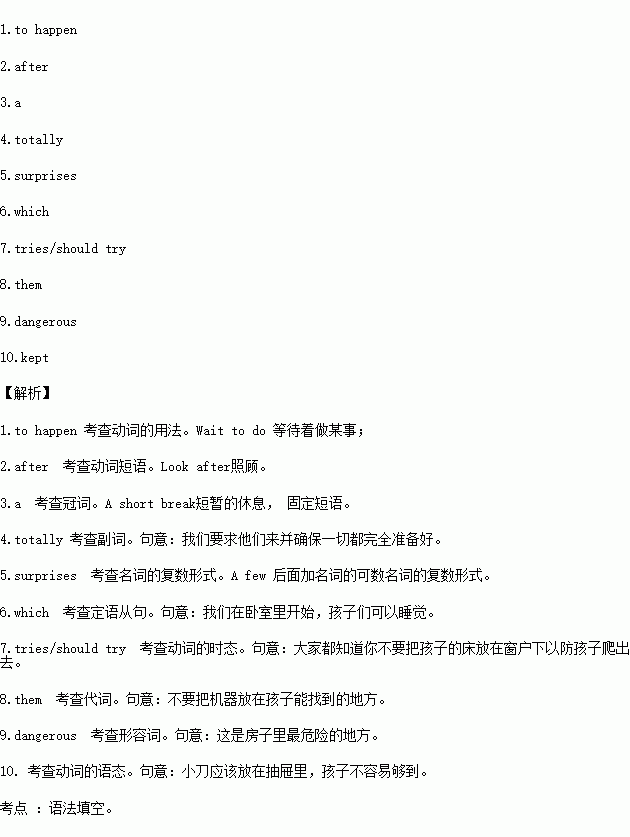题目内容
Make your home a safer place
You probably think that your home is the one place where you are safe. That’s what I thought until last week. Now I knew our flat is full of accidents waiting 1. (happen). Next month we’ll look 2. my niece and nephew while their parents go away for 3. short break. We asked them to come and make sure that everything was 4. (total) OK. All of us got a few 5. (surprise).
We started in the spare bedroom, in 6. the children will sleep. Everybody knows you shouldn’t put children’s beds under a window in case a child 7. (try) to climb out. Next was the bathroom. We keep our medicines on a shelf above the washbasin. Never leave medicines somewhere children can find 8. (they). They might think they are sweets. Finally, the kitchen. This is the most 9. (danger) room in the house. Knives should be 10. (keep)in drawers children can’t reach, and all cleaning liquids in high cupboards. So we have three weeks to make our house safe. It’s not difficult...once you know how.

